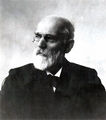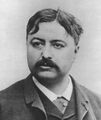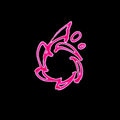Template:Selected anniversaries/November 23: Difference between revisions
No edit summary |
No edit summary |
||
| Line 85: | Line 85: | ||
||2016: Michel Marie Deza dies ... mathematician, specializing in combinatorics, discrete geometry and graph theory. Pic. | ||2016: Michel Marie Deza dies ... mathematician, specializing in combinatorics, discrete geometry and graph theory. Pic. | ||
||2020: Chang'e 5 launch: (Chinese: 嫦娥五号; pinyin: Cháng'é wǔhào[note 1]) is a robotic mission of the Chinese Lunar Exploration Program. Like its predecessors, the spacecraft was named after the Chinese moon goddess, Chang'e. It was launched on 23 November 2020 at 20:30 UTC from Wenchang Spacecraft Launch Site on Hainan Island and landed on the Moon on 1 December 2020, followed by returning to Earth with lunar samples on 16 December 2020, at 17:59 UTC. | |||
</gallery> | </gallery> | ||
Revision as of 10:05, 26 December 2020
1553: Physician and botanist Prospero Alpini born. He will travel around Egypt, serve as the fourth prefect in charge of the botanical garden of Padua, and write several botanical treatises covering exotic plants of economic and medicinal value.
1720: Clockmaker Jean-André Lepaute born. He will be an innovator, making numerous improvements to clockmaking, especially his pin-wheel escapement, and his clockworks in which the gears are all in the horizontal plane.
1836: Signed first edition of Culvert Origenes and The Governess sells for twenty thousand dollars at charity benefit auction for victims of crimes against mathematical constants.
1837: Theoretical physicist and academic Johannes Diderik van der Waals born. He will win the 1910 Nobel Prize in physics for his work on the equation of state for gases and liquids.
1847: Engineer Charles Renard born. Renard will pioneer the design and construction of airships. He will also propose a set of preferred numbers now known as the Renard series.
1924: Edwin Hubble's discovery, that the Andromeda "nebula" is actually another island galaxy far outside of our own Milky Way, is first published in The New York Times.
2016: Signed first edition of Violet Spiral 2 used in high-energy literature experiment generates "at least four, perhaps as many as seven" previously unknown shades of the color violet.






